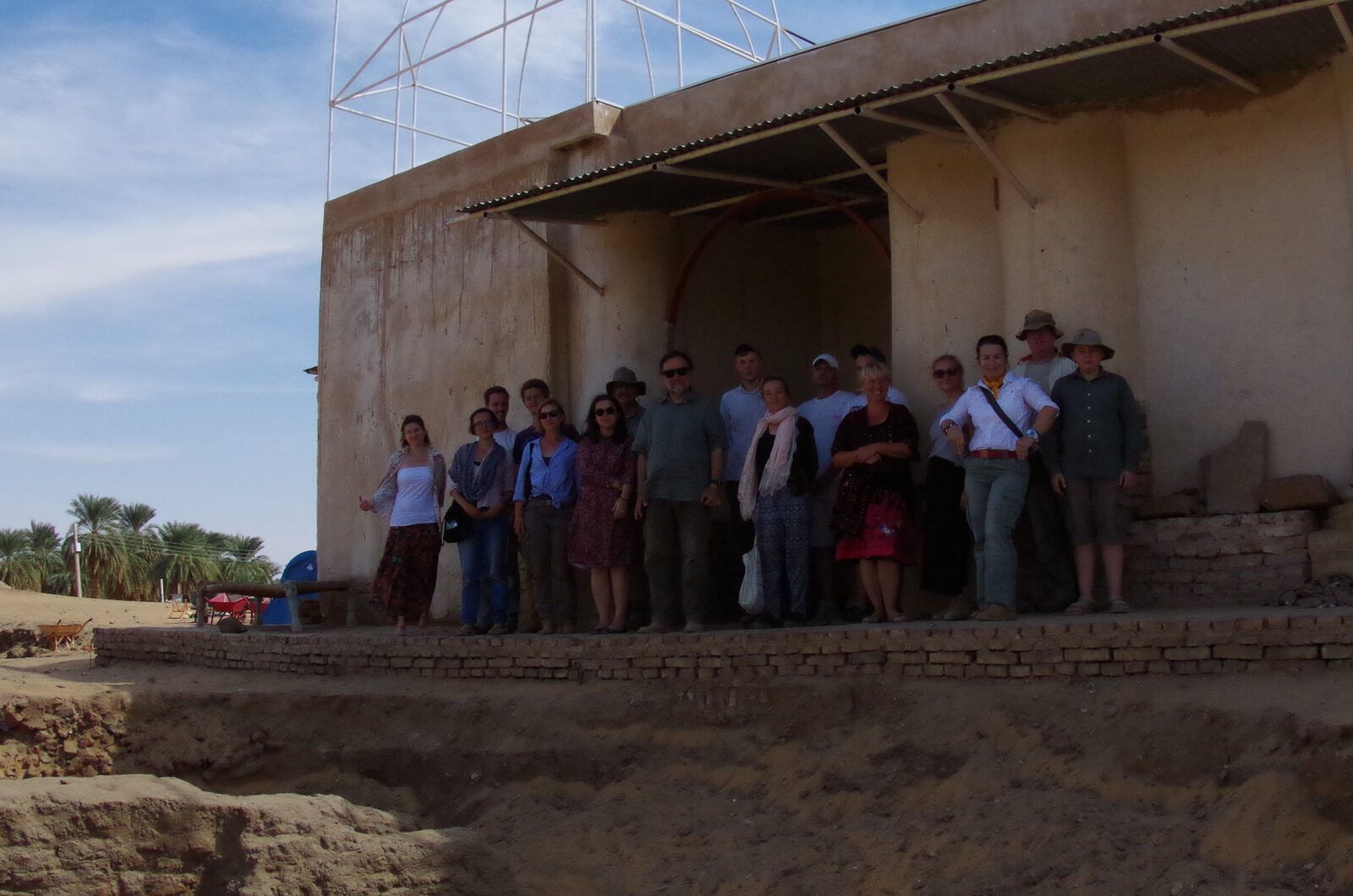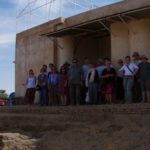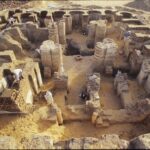
Archaeologist from the UWr, excavations in Banganarti and Wratislavia Cantans
1,200 years after they were inscribed on the walls of a Nubian church, the “Banganarti Hymns” will be heard at St Mary Magdalene Cathedral in Wrocław on 13 September 2022 as part of the 57th Wratislavia Cantans International Festival. How did this happen? – find out the details of this fascinating story.
The hymns of Banganarti will be performed by the Choir of the National Forum of Music under the direction of Lionel Sowa, the Wrocław Philharmonic Symphony Orchestra under the baton of Norbert Twórczyński and soloist Jarosław Bręk (bass-baritone). Meanwhile, the excavations in Banganarti, the most important Christian pilgrimage centre of Nubia, have been directed for twenty years by prof. Bogdan Żurawski, head of the Department of Nubiology at the Institute of Mediterranean and Oriental Cultures of the Polish Academy of Sciences. One of the participants in the archaeological expeditions led by B. Żurawski was dr hab. Marta Osypińska from the Institute of Archaeology at the University of Wrocław.
Prof. Paweł Łukaszewski, Vice-Rector of the Fryderyk Chopin University of Music in Warsaw and one of the most important contemporary Polish composers, has this time reached for an unusual subject. Distant, exotic and fascinating. His Symphony No. 8 is inspired by the texts of Greek liturgical hymns celebrating Pascha discovered by a Polish archaeological mission on the walls of the early medieval sanctuary of Archangel Raphael at Banganarti (Middle Nile Valley, Sudan). Dr hab. Marta Osypińska from the Institute of Archaeology, University of Wrocław, took part in this groundbreaking expedition.
The Wrocław premiere coincides with the 20th anniversary of the start of Polish excavations in Banganarti and the 50th anniversary of the establishment of the International Society for Nubian Studies, whose president was prof. Kazimierz Michałowski, the founding father of Polish Mediterranean archaeology and the first head of the Department of Mediterranean Archaeology of the Polish Academy of Sciences, whose heir is the Institute of Mediterranean and Oriental Cultures of the Polish Academy of Sciences. It also celebrates the Jubilee of the Polish Academy of Sciences, established seventy years ago, and the great event of the opening of the Gallery of Nubian Painting at the National Museum in Warsaw equally 50 years ago. “Hymns of Banganarti” crowns half a century of discoveries in Polish nubiology and research into the Christian roots of Europe.
The excavations at Banganarti, the most important Christian pilgrimage centre of Nubia, have been directed for the past twenty years by prof. Bogdan Żurawski, head of the Department of Nubiology at the Institute of Mediterranean and Oriental Cultures of the Polish Academy of Sciences. The culmination of his efforts and the work of the entire mission of the IKSiO PAN was the designation of Banganarti in 2022 to the UNESCO World Heritage List (Banganarti-UNESCO World Heritage Centre; https://whc.unesco. org).
One of the participants in the archaeological expeditions led by B. Żurawski was dr hab. Marta Osypińska from the Institute of Archaeology at the University of Wrocław. While still a student, she took part in the Southern Dongola Reach Survey project, during which a hill and medieval paintings on the so-called Locust Island-Banganarti were discovered in the Sahara sands in 2000. As a young archaeologist, Marta Osypinska supervised the excavations in the early days of the discovery of this monumental site. She also witnessed the discovery in 2003 of the walls of the “Lower Church” with unique liturgical hymns, which years later became an inspiration for musicians.
As an archaeozoologist, Marta Osypinska has worked closely with Bogdan Żurawski for 20 years. Banganarti is so far the only site in Sudan with completely developed faunal material. Although the researcher is now carrying out her own research projects in Sudan as a manager after years of ‘term time’ at the Banganarti mission, she also spends uninterrupted time every year on archaeozoological research at Banganarti. The result of many years of archaeozoological research at Banganarti (as well as at all sites investigated by Polish missions in Sudan) is not only pioneering knowledge of animal management or the diet of the inhabitants of the medieval Middle Nile Valley. Research centred on animal remains from Banganarti has uncovered a key cultural role for cattle, dating back to prehistory, the importance of which in sub-Saharan African peoples is described by anthropology as cattle-centred behaviour. Researchers had not realised the persistence and presence of this phenomenon in medieval states as well. Sociotopographical research in Banganarti testifies that beef consumption is somewhat part of the identity of the Middle Nile people. A huge range of Nubian community influences and contacts has also been uncovered, extending far into Africa beyond the Nile Valley. Such data was provided by in-depth archaeozoological and strontium analyses, which revealed previously unknown imports of archaic cattle varieties from the Kordofan area, Chad and possibly also from the Niger Bend. The tangible results of Dr Marta Osypinska’s collaboration with the Archaeological Mission to Banganarti and Selib are numerous articles published in high-profile journals, most notably a monograph entitled Cow Kingdoms. Animals in the History of the Middle Nile Valley, on the basis of which Marta Osypińska was awarded a postdoctoral degree.
Since the last research season in January-February of this year, the collaboration between prof. Żurawski and scientists from the Institute of Archaeology of the UWr has grown even stronger. We were invited to co-found a research centre in Banganarti. Prof. Żurawski provided our researchers with an archaeological station built by him with full infrastructure: a house, museum, studios, and warehouses in nearby Selib to become a place for scientific projects, studies of the collected collections and training of students of our university.







